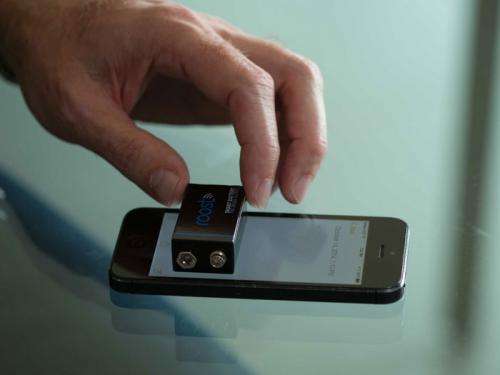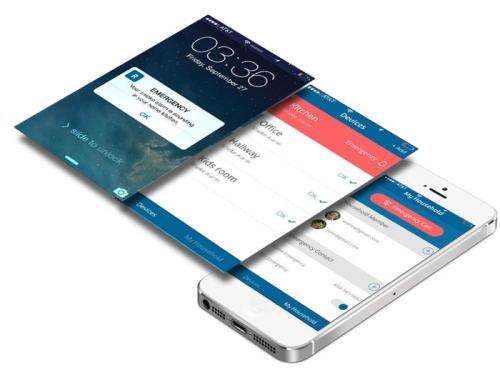Sunnyvale, California-based Roost has come up with a WiFi connected 9-volt battery and Roost aims to make it easily smart. It plugs into any old smoke alarm to make it smart. This is promoted as a simple and elegant solution, according to Roel Peeters, the company CEO, for retrofitting your existing smoke detectors, to create a safer home. The battery connects your alarm to the Internet. In today's connected world, said James Blackwell, CTO (who is described as a wireless industry veteran with over 20 years' experience in the design and manufacture of Bluetooth and Wi-Fi systems), the smoke detector is old technology; the way we interact with our smoke detectors is not very intuitive. They don't even know the difference between night and day, he added. Nobody likes waking up at 3 am to a low battery chirp and wandering around, half asleep, trying to figure out which alarm is really beeping. They offer something far easier.
The three basic ingredients are your smartphone, your existing smoke alarm, and your Roost smart battery— for peace of mind, says one of their banners "Simply download our Roost app, connect to your home WiFi, and then insert the Roost Smart Battery in an existing smoke alarm to appreciate how simple and intuitive it is to install and use," said Roel Peeters, Roost CEO and co-founder.
The CTO said they spent the last few months developing prototypes, to prove the concept. They have working development boards, he said, and their next step is to get this ready for mass production.
If one of the alarms activates, you get an alert. (Choose a smoke alarm and name it, for example, "Upstairs Hallway." Its smart battery connects to your Wi-Fi and appears as a newly configured device in the Roost app. Install the battery in the "Upstairs Hallway" smoke alarm.) A pledge of $35 gets one Roost Smart Battery with estimated delivery of June 2015. Their product works with Android 4.2 and above, and with iOS 6.0 and above. They intend to offer both apps when they start shipping in Q2 2015. The product has a battery life of over five years. Commenting on the battery, Rick Merritt, Silicon Valley Bureau Chief of the EE Times, said, "The startup is writing its own power management software to get more than five years' life from the battery and alert the user at a reasonable hour when it needs to be recharged."
The size and weight are the same as a typical 9V battery. The product includes a micro controller and low-power Wi-Fi chip powered by lithium battery technology. It can be used with any existing smoke alarm or carbon monoxide detector that uses a 9V battery.
More information: — www.kickstarter.com/projects/r … en-your-smoke-alarms
© 2014 Tech Xplore























